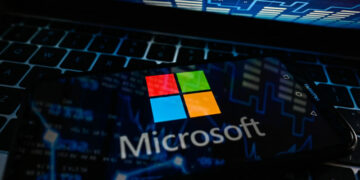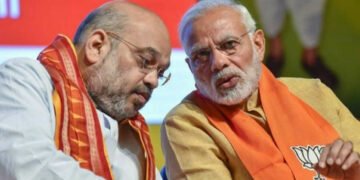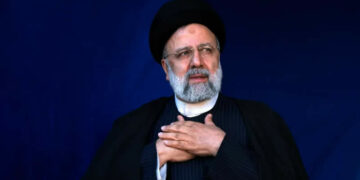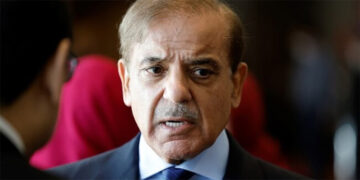 EDDAH: After more than two years of global financial crisis, the Saudi banking sector has emerged almost unscathed. But like many banking systems, during the turbulent period, both investment and loan portfolios of Saudi banks were implicated. As a result, all Saudi banks have taken steps to reinforce their fundamentals by allocating provisions and cutting costs, while reaching out to customers, according to the Saudi Banking Sector Review titled “From Recuperation to Moderate Growth” by the National Commercial Bank (NCB) released on Saturday.Meanwhile, following a sharp deceleration in lending, attributed to bank’s cautiousness and slower demand for credit, a pick up in lending was resumed since the Q4, 2009. The Kingdom’s number one source of domestic financing, banking sector, has managed to rebound on an aggregate level, but showed stronger growth rates with regards to consumer lending. Corporate sector demand for funding has expanded by 2.6 percent in Q3, 2010, marking the third quarter of consecutive growth since its pick-up in Q4, 2009, yet it is far away from the 2008’s 30 percent average growth rate. Consumer lending rebounded from the -0.5 percent in Q2, 2009’s, surging by 9.2 percent in Q2, 2010, and setting the highest pace since Q4, 2006. Real estate finance took the spotlight growing in double digits for the past four quarters. The momentum is expected to have carried through the rest of 2010 and to continue into 2011, the NCB report said.
EDDAH: After more than two years of global financial crisis, the Saudi banking sector has emerged almost unscathed. But like many banking systems, during the turbulent period, both investment and loan portfolios of Saudi banks were implicated. As a result, all Saudi banks have taken steps to reinforce their fundamentals by allocating provisions and cutting costs, while reaching out to customers, according to the Saudi Banking Sector Review titled “From Recuperation to Moderate Growth” by the National Commercial Bank (NCB) released on Saturday.Meanwhile, following a sharp deceleration in lending, attributed to bank’s cautiousness and slower demand for credit, a pick up in lending was resumed since the Q4, 2009. The Kingdom’s number one source of domestic financing, banking sector, has managed to rebound on an aggregate level, but showed stronger growth rates with regards to consumer lending. Corporate sector demand for funding has expanded by 2.6 percent in Q3, 2010, marking the third quarter of consecutive growth since its pick-up in Q4, 2009, yet it is far away from the 2008’s 30 percent average growth rate. Consumer lending rebounded from the -0.5 percent in Q2, 2009’s, surging by 9.2 percent in Q2, 2010, and setting the highest pace since Q4, 2006. Real estate finance took the spotlight growing in double digits for the past four quarters. The momentum is expected to have carried through the rest of 2010 and to continue into 2011, the NCB report said.
The fact that the aforementioned performance materialized, with no recourse to interbank funding and, in turn, no wider maturity mismatches, reflects the strong discipline in managing funding gaps. Saudi banks’ deposits base, the main source of funding to banks, comprised largely of short-term deposits, does not reflect un unmanageable maturity gap, as the short-term credit accounted for 59.5 percent of total loans. It is worth noting that the SR27.9 billion of credit and investment provisions accumulated since Q1, 2008 and up to Q3, 2010 to have remained just 3.6 percent of gross loans portfolio, the NCB said in its latest report.Will Saudi banks have enough resources to deploy in 2011 and beyond after registering historically low levels of lending in 2009 and 2010? The answer is clearly a yes, given the fact that capacity utilization is unstrained, with loans to deposits ratio falling from around 83.5 percent in 2008 to 77.5 percent in Q3, 2010. This capacity manifested itself in the substantial increase in net foreign assets and excess deposits with SAMA (Saudi Arabian Monetary Agency), amounting to SR106.6 billion and SR65.3 billion in Q3, 2010, respectively.The accommodative monetary policy, which was aimed to spur lending over the last two years, with SAMA implementing three consecutive cuts in the benchmark reverse repo rate from 1.5 percent to 0.25 percent, last of which in June 2009, however, mainly contributed to amassing of excess reserves at the central bank despite the low rate or return. On the demand side, an estimated $690 billion worth of projects planned and underway by the end of September 2010 are already tapping into conventional credit and most likely will create ample opportunities for banks. Project finance deals for the export refineries of Jubail and Yanbu are providing initial signs of recovery in lending by early 2011, with an estimated tranche for Saudi banks worth SR11 billion. Nonetheless, the report said, three critical bottlenecks do exist, which will limit the banks’ abilities to fully leverage the project finance deals, particularly: (1) the limited capital base to single-handedly finance any of such large deals,(2) the risk involved with maturity mismatches given the long-term payment nature of such projects and the short-term funding base, and (3) the dollar funding restraint given the limited and decelerating share of foreign currency deposits that fell from 17.1 percent of total deposits in 2009 to 14.2 percent in September 2010, which is attributed to the withdrawal of SR24.7 billion by businesses and individuals.
Sector structure
As of September 2010, our coverage universe comprising the fully operational 11 locally incorporated banks that accounted for 94.8 percent of system wide total assets, lost around 1 percent market share over the past twelve months. On an aggregate level, the industry as a whole is going through a tough period, with total assets recording a meager annual growth rate of 0.8 percent in Q3, 2010. The four main industry leading players continuing to remain strong are: NCB, Samba Financial Group, Riyad Bank, and Al-Rajhi Bank. NCB maintained its leading share in total assets that increased to 20.8 percent (SR271.2 billion) from 19.6 percent in Q3, 2009. Al-Rajhi Bank has captured an additional share of 1.2 percent to reach 13.9 percent, thus, grapping third place. Apparently, the rising shares of NCB and Al-Rajhi Bank came at the expense of RIBL and SABB (Saudi British Bank) who lost 0.4 percent and 0.5 percent, respectively, the report said.On the financing front, NCB had ousted Al-Rajhi Bank as the major lender in Q3, 2010, registering a 16.4 percent share of total loans and advances, yet Al-Rajhi Bank still commands a 16.0 percent share of total loans portfolio. Regarding deposits, the total industry rose by 2.4 percent to reach SR986 billion. The share distribution keeps its previous order with NCB at the top, holding almost 22 percent and Bank Albilad at the bottom of the list with 1.5 percent at a meager SR14.8 billion. Overall, the banking structure remains stable with insignificant changes going into 2011. Long-term funding, mostly in US dollar, had held steady at around SR21 billion, however, as noted earlier and with banks continuing to issue dollar bonds, such the BSF’s March bond issue of $650 million, the bank believes that local banks will proceed to beef up their dollar funding for top-tier project finance deals.
Profitability
By the end of Q3, 2010, banks reported an industry total net income of SAR20.3 billion, a decrease of 8.5 percent compared to Q3, 2009 on the back of higher provisions, a plunge in trading income, and a decline in net special commission income (NSCI), the NCB report said. Bank Albilad, Saudi Hollandi Bank (SHB), and NCB were the only banks that posted positive growth rates ranging between 72 percent and 6 percent. Most banks, however, showed declines in their net incomes, especially, Bank AlJazira and The Saudi Investment Bank (SAIB), plummeting by 81 percent and 69 percent, respectively, thus, weakening the industry’s overall performance. Besides provisions, trading income, including income from fair value through income statement (FVIS) investments, had been a negative drag on profitability, falling by a substantial 47 percent to SR1.1 billion in Q3, 2010 from SR2.1 billion over the same period last year. This depressed income outcome was apparently expected, given the historically low level of interest rates globally and the reduced local lending and stock market trading activities, especially with the memory of Q4, 2008’s and 2009’s elevated investment and credit provisions are still fresh in mind.Additionally, NSCI has contracted on an industry level by 1.2 percent, with spreads stagnating at 3.5 percent. While special commission expenses dropped by a staggering 55.5 percent, special commission income declined by 13.5 percent, bringing total NSCI to SR29.5 billion. Since cost cutting or “control” has been the trend with global financial instability and uncertain income flows, Saudi banks resorted to cutting the cost of funding to maintain income growth. Given the credit stagnation experienced since 2009, banks are justifiably not in need for funds; as they were able to re-price their deposit bases lower. The fact that deposits registered a small decrease reasserts this cycle going forward up until a robust pick up in lending activities takes place. Only five banks reported growth in NSCI, led by Al-Rajhi Bank and NCB, which posted 6.5 percent and 2.9 percent, respectively.
In analyzing the NSCI drivers, the average yield on earning assets stood at 4 percent, a decrease from 4.6 percent in Q3, 2009. Al-Rajhi Bank and NCB are the only banks outperforming the industry average with 5.9 percent and 4.2 percent, respectively. Cost of funding has contracted to an industry average of only 0.5 percent from 1.1 percent a year ago due to SAMA’s rate cuts and to a lesser degree to the re-pricing of liabilities. Bank Albilad and Al-Rajhi Bank continue to benefit from the highest non-interest bearing deposits base, hovering near 90 percent of total deposits, to register the lowest cost of funds at 0.1 percent and 0.2 percent, respectively. The ongoing financial crisis had forced Saudi banks to alter their asset mix from credit facilities to safer investments, largely in foreign fixed income assets. Shifting funds from lower and unrated grades to investment grades clearly indicates an environment of continued risk averseness. While investment volumes have increased, the globally low interest rates weighed down on yields, the NCB report added.Regarding banking fees, Bank AlJazira recorded around 33 percent decline last quarter; this came as no surprise due the bank’s reliance on brokerage business, especially, with the average daily trading value of Tadawul reaching a five-year low of SR1.55 billion in 2010. On the positive side, Bank Albilad, SHB, RIBL and Al-Rajhi Bank topped the list in Q3, 2010, as their banking fees grew by around 23 percent, 19 percent, 12 percent and 6 percent, respectively, largely attributed to a climb in money transfers as well as higher fees on corporate account related transactions. On aggregate, banking fees for the coverage universe had increased by 2.6 percent by the end of September.
Nevertheless, two factors were at play to support earnings from falling further, notably the gains on non-trading investments and the slowest annual rate of increase in salaries and employee related expenses. Capital gains on available for sale, held at amortized cost, and held to maturity investments had increased by 68 percent to register SR1.3 billion. The upsurge in valuations on bonds and financial instruments on a global scale since the beginning of the year, definitely, allowed Saudi banks to recoup part of the unrealized and realized losses they encountered during the previous two years, with investment provisions amounting to SR5.3 billion by the end of 2009.According to the NCB report, on the cost-side, the operating efficiency of Saudi banks continued to improve, as evident from the ability to contain operating expenses (excluding provisions), which rose by 3.4 percent in Q3, 2010, the lowest on record. Ostensibly, banks sustained their cost control tactics, with the increase in salaries at a meager 1.7 percent and the general and administrative expenses of 3.3 percent – Arabnews










